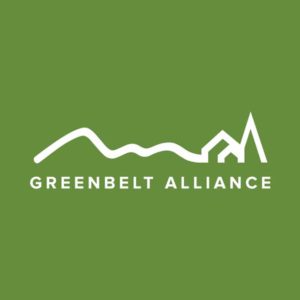February 23, 2011
EMBARGOED UNTIL: February 24, 2011
CONTACT:
Jeremy Madsen, Executive Director, jmadsen@greenbelt.org, (415) 543-6771
Tina Duong, tinatduong@yahoo.com, (415)794-7429 or (415) 422-0346
Marin’s Struggle to House Workers is Making Already Bad Traffic Worse
Sixty percent of Marin workers commute from outside the county, driving farther than any other Bay Area worker
San Rafael–Nearly 60 percent of people who work in Marin commute in from outside the county, farther on average than any other workforce in the Bay Area; most cannot afford to live near where they work, according to “Miles From Home,” a report released today by Live Local Marin, a special initiative of the Non-Profit Housing Association of Northern California (NPH), an affordable housing advocacy group, and Greenbelt Alliance, an environmental advocacy group. Cumulatively, Marin’s driving workforce puts an extra 2.37 million pounds of carbon emissions into the air each day, threatening Marin’s proud environmental heritage. Marin’s lack of affordable housing is cited as a primary cause, with two-thirds of Marin workers earning less than the $56,000 per year needed to afford to rent a one-bedroom apartment. Live Local Marin is calling on cities and the County to zone for more homes affordable to people who already work in Marin, so that they can live closer to where they work and drive less.
“While traffic problems are nothing new,” said Dianne Spaulding, Executive Director of NPH, “what we found is that, contrary to public belief, the traffic on 101 in Marin is not just due to people passing through, it is made up mostly of workers trying to get to their jobs in Marin. And, more importantly, more than half of these in-commuters earn less than $40,000 per year. That’s not enough to rent even a 1-bedroom apartment in Marin. Is it any wonder they need to commute long distances? We’re talking about workers like paramedics, kindergarten teachers and childcare workers. ”
“Marin has a great legacy of environmentalism with more permanently protected parks, farms, and wetlands than any other Bay Area county,” said Jeremy Madsen, Executive Director of Greenbelt Alliance. “But to create a truly sustainable county, Marin will need to provide affordable homes that allow workers to drive shorter distances. That’s one of Marin’s best ways to reduce its carbon footprint.”
The report finds that commutes to Marin have increased and traffic worsened as home costs have risen, all while Marin’s economy has shifted to lower-paying retail and service sector jobs, such as teachers, home health aides, childcare workers, and bank tellers. However, this shift in the economy was not matched by the creation of homes priced for moderate-wage workers. In fact, 77 percent of houses constructed between 1999 and 2006 were priced for households earning $80,000 or more per year. Only 11 percent of the county’s workforce can afford housing at that price. Over the next five years, it is projected that 65 percent of jobs created in Marin will be in low-paying sectors further widening the gap between supply and demand.
“We’re trending in the wrong direction. We have to turn this train around and we have chance to do it now,” said report author Robert Hickey, NPH’s Marin Program Manager. “Marin has a long history of creating, beautiful, safe and affordable homes for its workforce.” He cites Marin County’s recent inventory of below-market rate homes, which shows over 91 percent of the employed residents work in Marin County. Hickey continued, “As jurisdictions update their general plans, they have an opportunity to keep doing what works: to zone for a fuller range of housing choices near job centers so that people with roots in Marin can live closer to where they work. When we do that, we reduce commute congestion and protect our environment at the same time. It’s a double win for Marin.”
“The ‘Miles from Home’ report will go a long way toward raising awareness about the urgent need for housing affordable to Marin’s workers,” said League of Women Voters of Marin County President, Margy Eller. “It underscores what the League has long stood for: development has to be planned carefully to address and meet the need of all sectors of our community. We know the solutions to housing, employment and transportation issues will reduce regional vehicle miles traveled and greenhouse gas emissions. This report shows we can no longer afford to wait to achieve those goals.”
Live Local Marin will be conducting a tour of affordable workforce housing on Saturday, March 5, 9:00 a.m. to 2:00 p.m., starting at 1385 N. Hamilton Parkway, in Novato.
###
For 50 years, Greenbelt Alliance has been the San Francisco Bay Area’s advocate for open spaces and vibrant places, with offices in San Francisco, San Jose, Walnut Creek, San Rafael, and Santa Rosa. www.greenbelt.org
Live Local Marin
Live Local Marin envisions protecting the environment by making it easier for people with strong roots in the community to live closer to where they work. It is coordinated by NPH and Greenbelt Alliance with funding from the Marin Community Foundation, to improve Marin’s quality of life and create sustainable communities through efforts to ensure an adequate supply of new affordable housing. (www.livelocalmarin.org)
Non-Profit Housing Association of Northern California
NPH works to advance affordable housing as the foundation for thriving individuals, families and neighborhoods. As the collective voice of those who support, build and finance affordable housing, NPH promotes the proven methods of the non-profit sector and focuses government policy on housing solutions for low-income people who suffer disproportionately from the housing crisis. (www.nonprofithousing.org)





